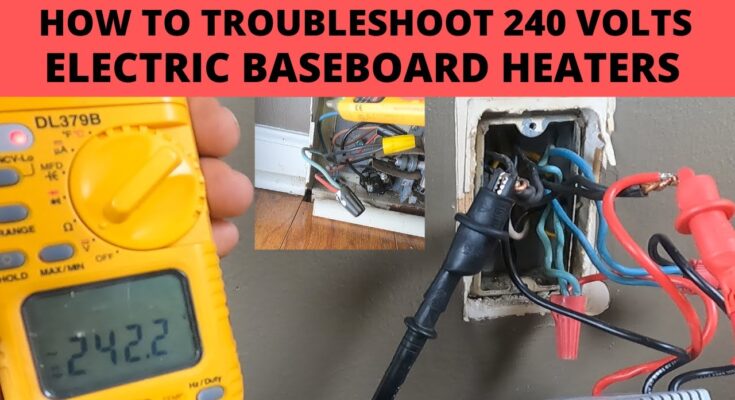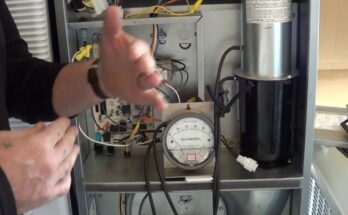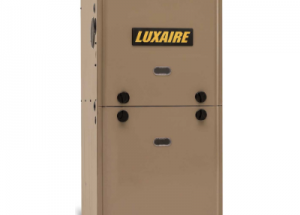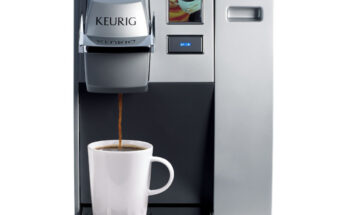Baseboard Heater Troubleshooting: Check the thermostat settings and ensure the power supply is active. Inspect for tripped circuit breakers and blown fuses.
Baseboard heaters provide consistent warmth but can encounter issues. Proper troubleshooting ensures they run efficiently. Start by verifying the thermostat is set correctly and that power flows to the unit. Inspect circuit breakers and fuses for any disruptions. Dust and debris can cause overheating, so clean the heater regularly.
Listen for unusual noises, as they may indicate mechanical problems. Checking wiring connections can prevent electrical faults. Simple maintenance steps can resolve most issues, keeping your heater in top condition. Regular inspections and prompt repairs extend the heater’s lifespan and maintain home comfort.
Common Baseboard Heater Issues
Baseboard heaters are great for keeping homes warm. Yet, they can have issues. Here, we explore common baseboard heater problems. This guide helps you troubleshoot and fix them.
No Heat Output
Sometimes, baseboard heaters stop producing heat. This can be due to several reasons:
- Thermostat Issues: The thermostat might not be set correctly. Ensure it is turned to the desired temperature.
- Power Problems: Check if the heater is plugged in. Also, inspect the circuit breaker for any tripped switches.
- Blocked Vents: Objects in front of the heater can block airflow. Clear any obstructions to allow proper heating.
Strange Noises
Baseboard heaters should run quietly. Strange noises can indicate problems:
- Clicking Sounds: This is normal when the heater turns on or off. The metal expands and contracts.
- Buzzing or Humming: This could mean a loose part. Tighten any screws and check for loose components.
- Grinding Noise: This is not normal. It may indicate a motor issue. Professional help might be needed.
Understanding these issues can help maintain your baseboard heater. Regular checks ensure it runs efficiently and safely.
Safety Precautions
When troubleshooting baseboard heaters, safety is crucial. Follow these steps to protect yourself and your home.
Power Off
Always turn off the power before working on the heater. This prevents electrical shocks and other dangers. Locate the circuit breaker and switch it off. Ensure no power flows to the heater.
Proper Ventilation
Ensure the room has proper ventilation. Heaters can emit dangerous gases if not ventilated correctly. Open windows and doors to allow fresh air to circulate. Avoid blocking vents or airways.
| Steps | Action |
|---|---|
| 1 | Turn off the power at the breaker. |
| 2 | Open windows for ventilation. |
| 3 | Ensure vents are unblocked. |
Follow these safety precautions to stay safe while troubleshooting your baseboard heater. Ensuring power is off and ventilation is proper can save lives.
Inspecting The Thermostat
Inspecting the thermostat is a crucial step in baseboard heater troubleshooting. The thermostat controls your heater’s temperature. Problems often stem from thermostat issues. Follow these steps to ensure your thermostat is working correctly.
Check Settings
First, check the thermostat settings. Make sure the thermostat is set to the desired temperature. Ensure the system mode is set to “Heat.” Sometimes, it’s easy to overlook these basic settings.
| Setting | Action |
|---|---|
| Temperature | Adjust to desired level |
| System Mode | Set to “Heat” |
Test Functionality
Next, test the thermostat’s functionality. Turn the thermostat to a higher setting. Listen for a click sound. This sound indicates the thermostat is trying to activate the heater.
- Turn thermostat to a high setting.
- Listen for a click sound.
- Check if the heater turns on.
If you do not hear a click, the thermostat may be faulty. Consider replacing the thermostat. Alternatively, consult a professional for further diagnosis.
Cleaning The Heater
Keeping your baseboard heater clean ensures it runs efficiently. Dirt and dust can build up over time. This can block airflow and reduce heating performance. Regular cleaning can prevent these issues.
Dust Removal
Dust can accumulate on your baseboard heater. This can cause it to overheat. Use a soft cloth to wipe the surface. Make sure the heater is off and cool. Gently clean all visible parts. Pay attention to the top and sides. Remove any dust you see. This will help the heater run smoothly.
Vacuuming Fins
The fins inside the heater can collect dust too. Use a vacuum cleaner with a brush attachment. Carefully vacuum between the fins. Be gentle to avoid bending them. A bent fin can block airflow. This can reduce the heater’s efficiency. Vacuuming the fins ensures proper air circulation.
Checking Electrical Connections
Baseboard heaters are essential for keeping your home warm. Sometimes, they may stop working. One common issue is electrical connections. Checking electrical connections can solve many problems.
Loose Wires
Loose wires can cause baseboard heaters to malfunction. To check for loose wires, follow these steps:
- Turn off the power to the heater.
- Remove the heater’s cover.
- Inspect all wires for loose connections.
- Tighten any loose wires using a screwdriver.
Loose wires can cause sparking and overheating. Always ensure wires are secure.
Corrosion
Corrosion can affect electrical connections. Check for corrosion by:
- Turning off the power to the heater.
- Removing the cover of the heater.
- Looking for any rust or discoloration on the wires.
- Cleaning corroded connections with a wire brush.
Corroded connections can cause poor heater performance. Clean connections ensure a stable flow of electricity.
| Issue | Solution |
|---|---|
| Loose Wires | Tighten connections with a screwdriver. |
| Corrosion | Clean with a wire brush. |
Regular checks can prevent major problems. Always turn off the power first. Safety is the top priority.

Credit: www.angi.com
Replacing Faulty Components
Baseboard heaters can wear out over time. Replacing faulty components can restore your heater’s function. This section covers two main parts: the thermostat and the heater element.
Thermostat Replacement
A faulty thermostat can cause heating issues. Follow these steps to replace it:
- Turn off the power to the heater.
- Remove the thermostat cover.
- Disconnect the wires from the old thermostat.
- Connect the wires to the new thermostat.
- Attach the new thermostat to the wall.
- Turn the power back on and test the heater.
Heater Element Swap
The heater element is crucial for warmth. Here’s how to swap it:
- Turn off the power to the heater.
- Remove the front panel of the heater.
- Locate the heater element inside.
- Disconnect the wires from the element.
- Unscrew and remove the old element.
- Install the new element and reconnect the wires.
- Replace the front panel and turn the power back on.
Improving Efficiency
Baseboard heaters are great for keeping your home warm. But they can be costly if not used efficiently. Simple changes can make them more effective. Let’s explore some easy tips to improve their efficiency.
Insulation Tips
Good insulation keeps the heat inside your home. This helps your baseboard heater work less.
- Seal gaps around windows and doors to prevent heat loss.
- Use weather stripping to block drafts.
- Install thermal curtains to keep the warmth in.
- Ensure your attic and walls are properly insulated.
These steps make a big difference. Your heater will use less energy, saving you money.
Optimal Placement
The placement of your baseboard heater is crucial. It affects how well it heats your room.
| Tip | Benefit |
|---|---|
| Under windows | Counteracts cold air from windows. |
| Near outside walls | Provides uniform heating. |
| Avoid blocking | Keep furniture and curtains away. |
Correct placement ensures even heating. This makes your home more comfortable.
Follow these tips to improve your baseboard heater’s efficiency. You’ll enjoy a warmer home and lower energy bills.

Credit: www.youtube.com
Professional Help
Dealing with baseboard heater issues can be daunting. Sometimes, the best course of action is to seek professional help. Knowing when to call a technician can save you time, money, and ensure safety.
When To Call A Technician
Not all baseboard heater problems can be fixed by DIY methods. Here are some scenarios where you should call a professional:
- Repeated Circuit Breaker Trips: Frequent tripping signals a deeper electrical issue.
- Unusual Noises: Clicking or buzzing sounds may indicate a malfunction.
- Uneven Heating: Areas that remain cold suggest a problem with the heater.
- Persistent Burning Smell: This could mean overheating, a fire risk.
What To Expect
When you call a technician, knowing what to expect can ease your worries.
| Step | Description |
|---|---|
| Initial Inspection | The technician will first inspect the heater. |
| Diagnostic Tests | They will run tests to identify the issue. |
| Repair Plan | You’ll receive a repair plan and cost estimate. |
| Repair Work | The technician will fix the identified issues. |
| Final Testing | They will test the heater to ensure it works. |
Calling a professional can save you from bigger headaches down the road. Always choose a licensed technician to ensure quality work.
Credit: www.diychatroom.com
Frequently Asked Questions
What Would Cause A Baseboard Heater Not To Work?
A baseboard heater might not work due to a tripped circuit breaker, faulty thermostat, or burnt-out heating element. Check for loose wiring connections. Ensure the unit is clean and free from obstructions. If issues persist, consult a professional.
Do Baseboard Heaters Go Bad Over Time?
Yes, baseboard heaters can deteriorate over time. Regular maintenance is essential to ensure they function efficiently and safely.
What Is The Life Expectancy Of Electric Baseboard Heaters?
Electric baseboard heaters typically last 15 to 20 years. Proper maintenance can extend their lifespan. Regular cleaning is essential.
Why Is My Electric Wall Heater Not Turning On?
Your electric wall heater might not turn on due to a tripped circuit breaker, faulty thermostat, or loose wiring. Check these components first.
Conclusion
Regular maintenance can prevent most baseboard heater issues. Always ensure safety when troubleshooting. Follow the steps carefully for effective results. If problems persist, consult a professional. Keeping your heater in good condition ensures a warm and comfortable home. Stay proactive and enjoy a hassle-free heating experience.



